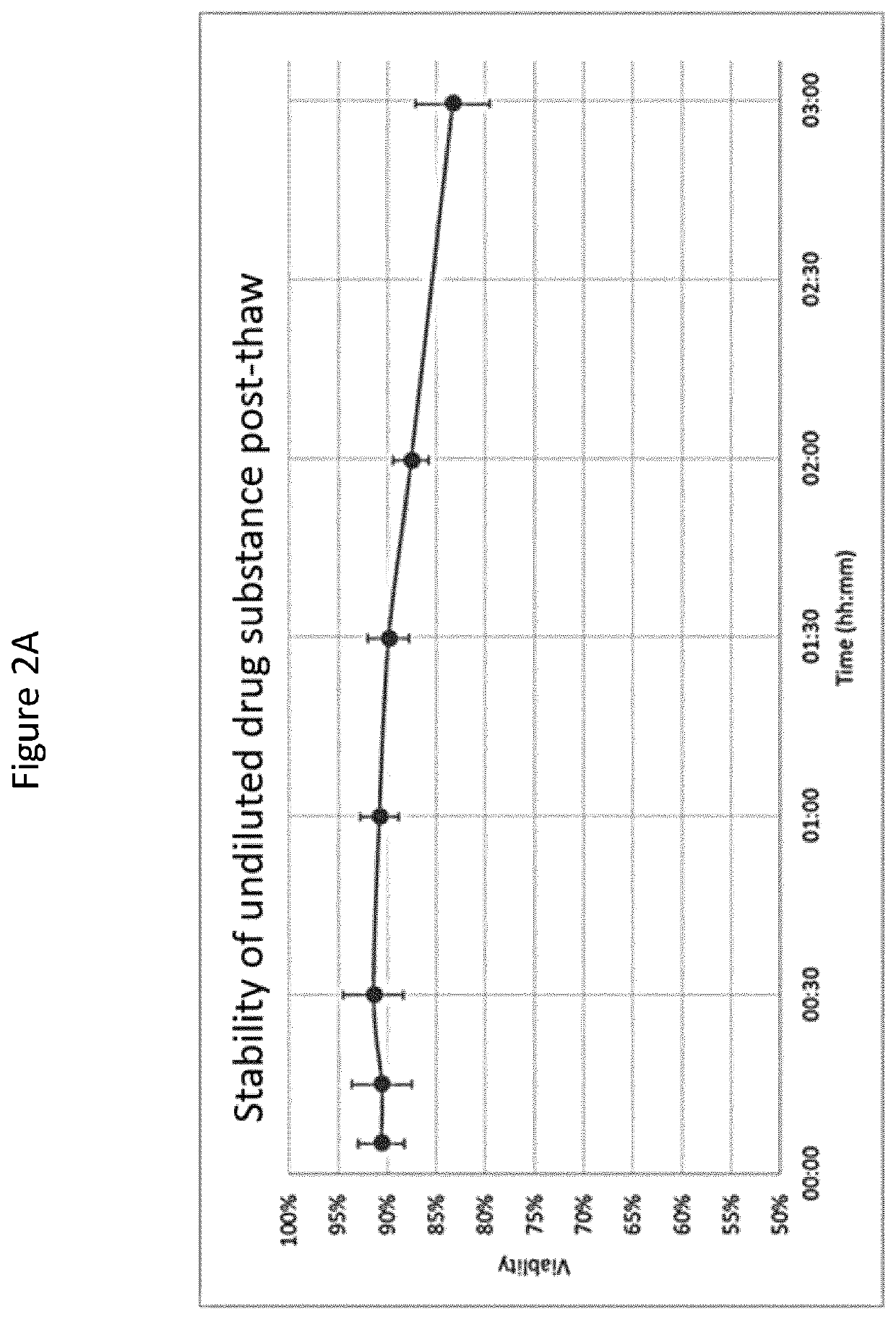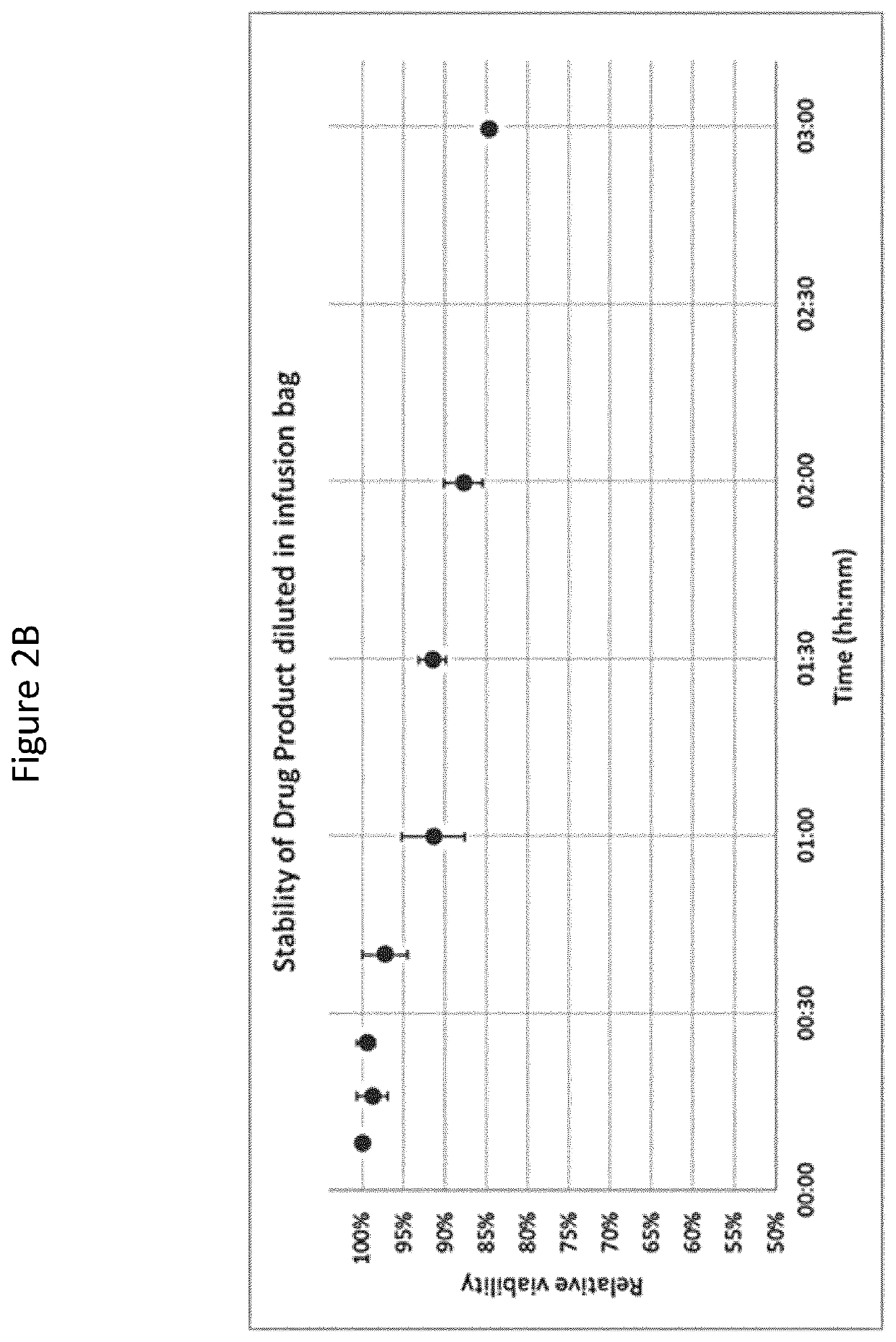Allogeneic composition for the treatment of CNS disorders
a technology of mesenchymal stem/stromal cell and composition, which is applied in the field of allogeneic populations of mesenchymal stem/stromal cells, can solve the problems of unable to cure als, difficulty in obtaining large batches of cells with desired properties, and overcoming the problem of cell number, etc., to achieve the effect of overcoming the problem of cell number and overcoming the problem of batch-to-batch heterogeneity
- Summary
- Abstract
- Description
- Claims
- Application Information
AI Technical Summary
Benefits of technology
Problems solved by technology
Method used
Image
Examples
example 1
[0179]The present Example describes the process of harvesting, transportation, ex vivo expansion, and cryopreservation of MSCs from Wharton's Jelly. Additionally, maternal blood is tested for infections agents. Furthermore, culture conditions are described.
Materials and Methods
[0180]The manufacturing for the Master Cell Stock of Wharton's Jelly-derived MSC is a continuous process from the donor qualification and subsequent ex vivo expansion in xeno-free culture system.
[0181]Umbilical cord (UC) samples are collected after natural delivery as well as caesarian sections after placenta expulsion and umbilical cord blood collection (for infectious agents screening). Maternal peripheral blood samples are also collected.
[0182]For minimizing the risk of contamination, disposable, sterile scissors and forceps are used and fragments of the umbilical cord are placed into sterile transportation containers filled with transportation liquid (99% Sodium Chloride (0.9% sol.) (Fresenius Cat. no: PK0...
example 2
[0191]The present Example describes characterization of MSCs from donors based on morphology, proliferative capacity and expression of markers for MSC according to the criteria of the ISCT. Furthermore, the cells are screened for the presence of mycoplasma, endotoxins, bacterial contaminants, fungal contaminants, viral contaminants and / or endotoxins and karyotype testing is performed. The described characterization results in identification of MSC populations derived from Drug Substance Intermediates, which MSCs fulfill quality criteria for pooling.
Materials and Methods:
[0192]First, MSCs must be plastic-adherent when maintained in standard culture conditions. Only plastic adherent cells are subject to the analytical procedures described below. Cultures are screened according to the analytical procedures given below.
Analytical Procedures
[0193]Infectious Agents.
[0194]Sampling. The source material for WJ-MSC manufacturing (placental part of the umbilical cord) is obtained within severa...
example 3
[0230]The present Example describes the screening assays used to characterize the said MSC populations derived from Drug Substance intermediates for morphological, proliferative and functional characteristics in order to select the MSC populations to be pooled.
Materials and Methods:
[0231]Below follows the description of 6 assays used to characterize the MSC populations.
[0232]Assay 1—IDO: IDO assay is used to analyze the immunosuppressive capacity of Drug Substance Intermediate or Drug Substance, i.e. mesenchymal stem / stromal cells (MSC).
[0233]The UC-MSC immunomodulatory potential is reported as a measure of indoleamine 2,3-dioxygenase (IDO) activity, determined by measuring tryptophan and kynurenine in the culture supernatant. Indoleamine-pyrrole 2, 3-dioxygenase (IDO or INDO EC 1.13.11.52) is a heme-containing enzyme that in humans is encoded by the IDO1 gene. The IDO enzyme converts L-tryptophan to N-formylkynurenine (or kynurenine), an immunosuppressive molecule that acts as an i...
PUM
 Login to View More
Login to View More Abstract
Description
Claims
Application Information
 Login to View More
Login to View More - R&D
- Intellectual Property
- Life Sciences
- Materials
- Tech Scout
- Unparalleled Data Quality
- Higher Quality Content
- 60% Fewer Hallucinations
Browse by: Latest US Patents, China's latest patents, Technical Efficacy Thesaurus, Application Domain, Technology Topic, Popular Technical Reports.
© 2025 PatSnap. All rights reserved.Legal|Privacy policy|Modern Slavery Act Transparency Statement|Sitemap|About US| Contact US: help@patsnap.com



